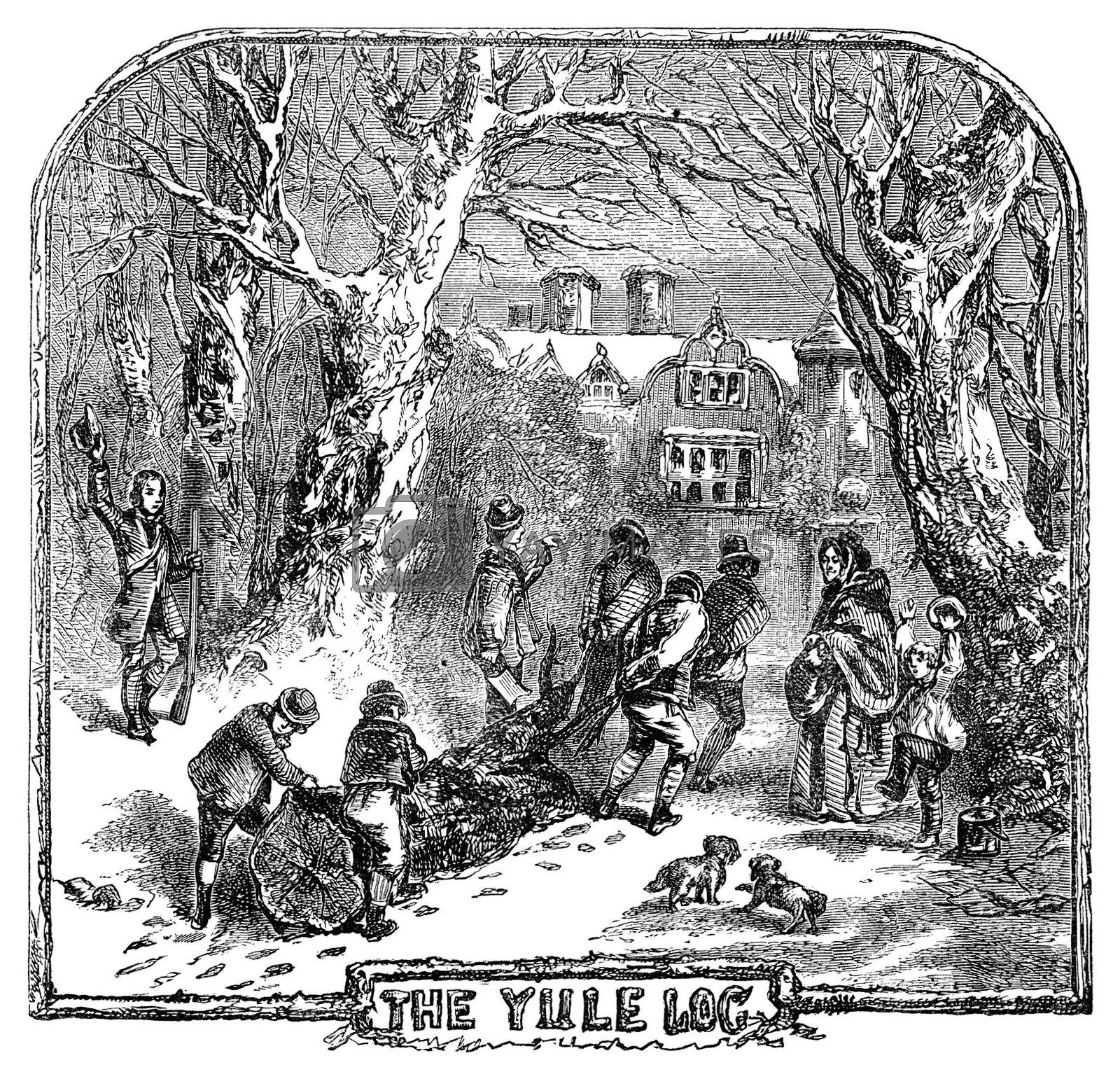The Yule Log
 |
| An illustration of people collecting a Yule log from Chambers Book of Days (1832) |
The Yule Log was originally a whole tree - one end would be placed into the fire hearth while the rest of the tree stuck out into the room, and over the 12 days it would gradually be fed into the fire. Of course, this is not so easy with modern fireplaces!
Many countries and regions still have a Yule Log tradition with lots of interesting local variations - for example in Catalonia in Spain, Tió de Nadal or Christmas log is covered in a blanket and fed grass or fruit, then beaten with a stick to an accompanying song persuading it to "poop" sweet edible gifts - a fun tradition that has its roots in hopes for a fertile harvest the next year.
In Devon and Somerset in the UK, some people use a large bunch of ash twigs instead of the log, based on a local legend that the shepherds found some bunches of twigs to burn to keep the baby Jesus warm. And in parts of France the log is sprinkled with wine so it smells nice when burnt. Here in Wales we don't have any specific yule log traditions - but it is sometimes called a Boncyff Nadolig meaning Christmas log or "Christmas stump"!
The most modern tradition I found is the TV Yule log in America, where in 1966, a Yule Log burning in the Lord Mayor of New York's fireplace was shown on TV on Christmas morning. The TV Yule Log is still being shown today - you can watch it yourself on the web through TheYuleLog.com.
But for many of us, our Yule log is a chocolate one. The Chocolate Yule Log or 'bûche de Noël' is a chocolate sponge rolled into a log shape and smothered in rich chocolate cream. Delicious. If you fancy making your own - here's a link to the Hairy Biker's Yule Log.


